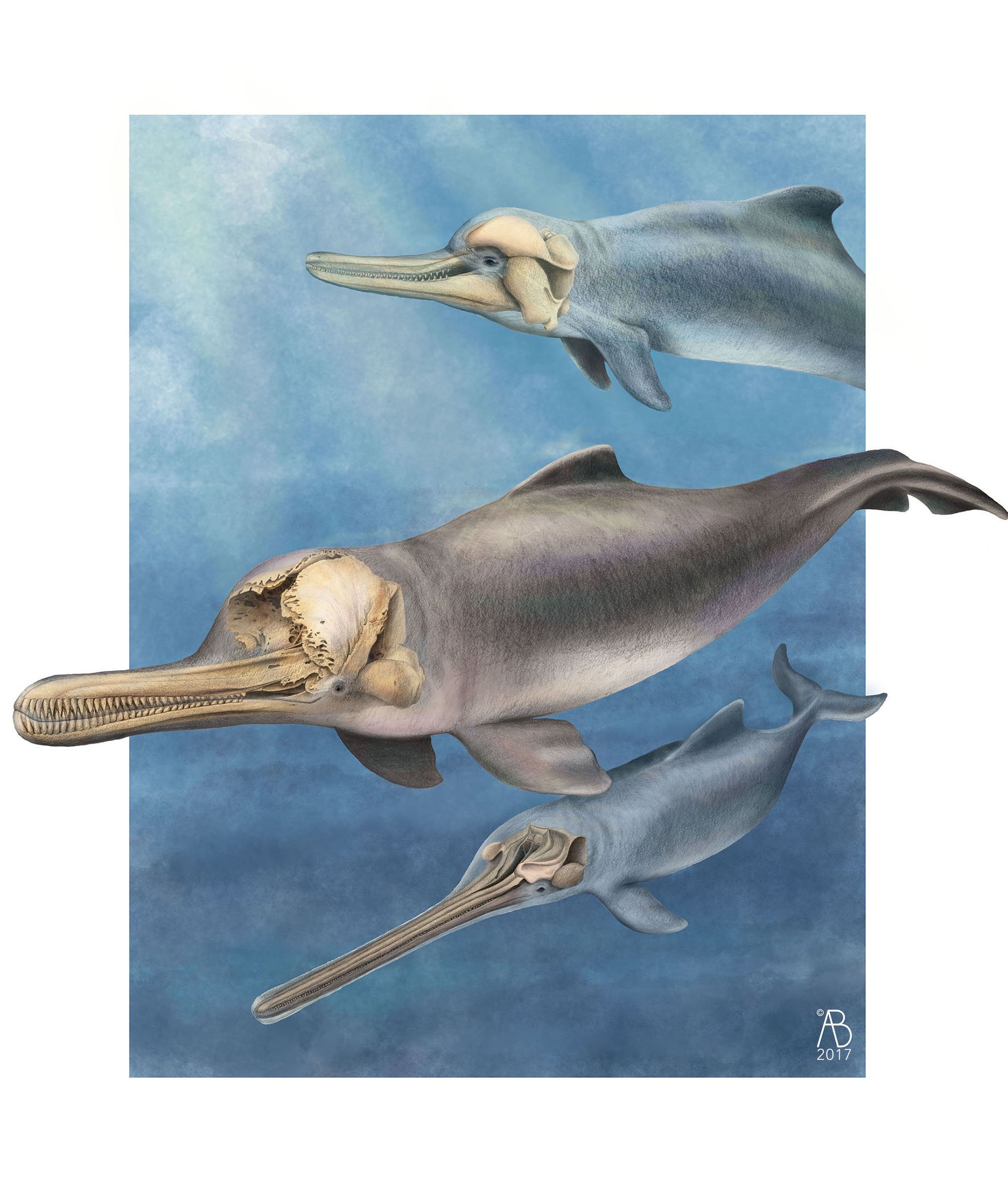New, ancient dolphin species had weird skull crests

Meet Dilophodelphis fordycei, a new species of dolphin that lived about 20 million years ago, roaming the North Pacific waters.
The new fossil dolphin species is a distant relative of the highly endangered Platanista gangetica, the South Asian river dolphin.
The fossil skull that led to the identification of this new species was found in 1967 by fossil hunter Douglas Emlong in the coast of Oregon, who donated his finding to the Smithsonian museum in the US.
There the skull waited more than 50 years to be re-discovered, until Alex Boersma, a Masters student at California State University, came along to analyze it along with a few other specimens that likely belonged to the river dolphin family Platanistidae.
The fossil came to my attention while I was working at the Smithsonian—I was really interested in Platanista because of its crazy skull anatomy and endangered status, and was looking for its fossil relatives among the collection,” Boersma says.
“When I came across the skull of Dilophodelphis, I was struck by how strange it was, really like nothing else I’d seen, and a pretty complete specimen at that!” she adds.
Boersma used computed tomography (CT) scans to analyze the inner structures of the different skulls and found that one of the specimens was a totally new species, which they named Dilophodelphis after the big paired crests present in its skull.
“So, we know that Dilophodelphis inhabited North Pacific waters, although the species could have had a broader range than that. The rock formation that the skull was found in also tells us that it is roughly 19-20 million years old,” says Boersma, who led the new study published this week in the journal Royal Society Open Science, along with Australian researcher Matthew McCurry from the Monash School of Biological Sciences and Nicholas D. Pyenson, from the Smithsonian’s National Museum of Natural History in Washington, DC, USA.

The endangered South Asian river dolphin, Platanista gangetica (middle), swimming alongside two of its fossil relatives: the longirostral Pomatodelphis inaequalis (bottom) and the new species Dilophodelphis fordycei (top). None of the species lived together at the same time. Glow-throughs to the skulls highlight the diversity in supraorbital crest shape and size among the members of this family. (Image: Alex Boersma)
But beyond the excitement of finding a new species, Boersma says that what is really interesting about this new species is its weirdly shaped head.
“What is really the most interesting thing about Dilophodelphis, and what we decided to focus on in our paper, is the big, paired crests on the skull,” she says. “Similar crest-like structures are seen in the relatives of this species, especially in Platanista where they have become super elaborate. It’s been hypothesized, in the case of Platanista, that the crests are likely involved in echolocation, helping to reflect and direct sound,” she adds.
But echolocation is just one of the potential explanations for these crests. Dilophodelphis could have used its massive cranial structures for a bunch of different things. For example, they could have functioned as display structures for male-male competition or for attracting females or they could have helped with the production of sounds.
The findings also highlight the importance of re-visiting museum collections, says Boersma. “There are so many hidden gems in museum collections!” she adds.
READ MORE:




